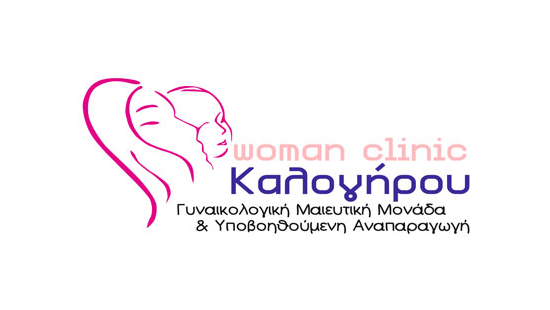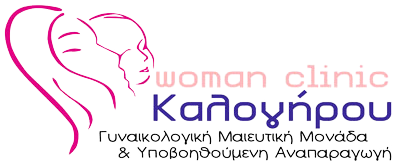07 Mar Pregnancy and exercise

Exercise is part of our daily lives, whether we realize it or not.
Actions such as climbing a flight of stairs, a walk to the shops or a brisk walk to catch the bus are forms of exercise in themselves.
The term recovery exercise refers to any form of planned regular exercise that a woman engages in during her pregnancy, which includes active (aerobic) exercise (such as swimming or running) and strength conditioning exercise.
The goal of rejuvenating exercise during pregnancy is – for a woman – to stay in shape.
Benefits for you
Many women find that invigorating exercise helps them adjust more easily to the physical changes that occur during pregnancy.
It provides relief from the easy fatigue of pregnancy, lower back muscle pain and reduces varicose veins and swelling of the lower limbs and ankles.
It also improves muscle tone, strength, endurance, bloating and constipation.
It enables you to handle your pregnancy weight more comfortably and contributes to your better preparation for the ordeal of childbirth!
Invigorating exercise creates a sense of well-being and vitality.
This wellness during pregnancy can help you to reduce the feeling of stress, anxiety and depression of childbirth.
Restorative exercise also improves sleep.
During pregnancy it can also help prevent diseases such as:
- gestational diabetes (diabetes that develops during pregnancy)
- hypertension (high blood pressure).
- osteoporosis
Invigorating exercise also reduces your risk of developing colon cancer and may reduce your risk of developing breast cancer later in life.
If you have gestational diabetes (diabetes that develops during pregnancy), exercise can help improve your blood sugar levels.
Benefits for your baby
Women who do strength training during pregnancy tend to have a shorter labor and a lower incidence of labor complications.
Are there risks?
Although vigorous exercise can be beneficial during pregnancy, there may also be some risks.
These are related to the physical changes that occur as your body adjusts to pregnancy. Risks are more likely to occur when you apply inappropriate types of exercise and when you exercise too much.
By making appropriate adjustments to your exercise routine, you can reduce the chance of harm to you or the baby.
Risks include:
A large rise in temperature (hyperthermia).
When exercising during pregnancy, your overall body temperature rises more than it normally would.
If your body temperature rises above 39.2°C in the first 12 weeks, this may affect the baby's development and may lead to some kind of disability after birth.
To reduce the risk of raising your temperature too much, you should:
- ensure you drink plenty of water before and during exercise;
- avoid overexercising your body, especially during the first 12 weeks of pregnancy,
- avoid exercising in a very hot and humid climate until you acclimatize – this will take a few days.
Low blood pressure (hypotension)
When you lie on your back, the fetus presses on the main blood vessels.
The result is that less blood is sent to your body's circulation and this can lead to low blood pressure (hypotension).
This is more likely after 16 weeks of pregnancy.
To reduce the risk of low blood pressure, you should:
– avoid exercises that involve lying on your back, especially after 16 weeks.
Physical harm
During pregnancy you may notice that your joints become looser.
You may also notice that you can bend and extend certain parts of your body more than usual, such as your elbows, wrists, fingers, and knees.
This is often referred to as hypermobility.
This is because hormonal changes affect the ligaments that normally support your joints, which in turn makes the joints loose in preparation for childbirth.
When your joints and ligaments are less stable, they are at increased risk of injury.
To reduce the risk of injury, you should:
- make sure you warm up and stretch.
- avoid sudden changes of direction if you are doing aerobic exercise
- wear pelvic support belts during exercise.
Insufficient oxygen in the baby (hypoxia)
At high altitudes, the blood flow to the uterus decreases and so the baby gets less oxygen.
If a woman exercises at high altitudes, the amount of blood flowing to the uterus is reduced even more.
This leads to a lack of oxygen to the fetus.
To avoid the risk of the baby getting an insufficient amount of oxygen, you should:
- to avoid physical exercise at an altitude above 2,500 meters until acclimatization – this may take a few days.
Blood sugar level
Blood glucose is a source of energy for both you and the baby.
It is important to:
- eat well during pregnancy
- the duration of the exercise should not exceed 45 minutes each time.
If you have pre-existing or gestational diabetes, then you should be extra careful when exercising.
You should have your blood glucose monitored regularly, eat at regular intervals, rest at specific times, and ensure that your baby is regularly and diligently monitored.
Your doctor should give you more information.
Why aerobic exercise and strength training?
The best forms of vigorous exercise during pregnancy are:
- aerobic exercise, also known as cardiovascular exercise. During it, your heart rate increases. This causes blood to circulate faster and therefore more oxygen reaches the muscles. Swimming, running, brisk walking, water aerobics and dancing are examples of aerobic exercise.
- strength training. This form of exercise helps increase your overall fitness and involves slow, controlled movements such as weight-bearing exercises.
If you don't exercise regularly and want to start an aerobic exercise program, you should be advised to start with no more than 15 minutes of continuous exercise three times a week, working your way up to a maximum of 30 minutes four times a week up to daily .
If you exercise regularly before pregnancy, you should be able to undertake the same higher-intensity exercise programs, such as running and aerobics, without adverse effects on you or the fetus.
As your pregnancy progresses, you should aim to gradually reduce your overall activity.
Your doctor can give you guidance on when and how to reduce your exercise.
What Kinds of Rejuvenating Exercises Should You Avoid?
You should avoid contact sports where there is a risk of hitting the abdomen, such as kickboxing, judo or squash.
You should be especially careful when doing exercises where there is a chance of falling or losing your balance, such as horse riding, downhill skiing, ice hockey and cycling.
It would be best to avoid these exercises unless you do them regularly and generally have the extra care required.
The consequences of a fall can be more serious in pregnancy.
You should avoid diving throughout your pregnancy because the baby has no protection against the risks of decompression sickness and air embolism underwater.
How can I be sure I don't overdo it?
You should always have a "warm-up" period as well as a cool-down period at the beginning and end of the program respectively.
There are also various techniques, such as the speech test, with which you can stay in "shape", without exercising too intensely: during the exercise you should be able to start and maintain a conversation - if shortness of breath occurs , then you are probably exercising too hard.
When should I stop exercising?
If you have any of the following symptoms, you should not continue exercising and should contact your doctor:
- dizziness or feeling faint
- headache
- difficulty breathing before or during exercise
- pain or palpitations in your chest
- pain in your abdomen, back or pubic area
- weakness in your muscles
- pain or swelling in your leg/feet
- painful contractions of the uterus
- reduced fetal movements
- fluid leakage (amniotic fluid)
- bleeding.
Can I exercise if I have a medical condition?
If you have a medical condition, such as heart disease or high blood pressure, or develop one during pregnancy, then you should talk to your treating doctors (such as a cardiologist and gynaecologist) before doing any form of exercise.
Can I exercise immediately after giving birth?
If you had a normal pregnancy and delivery, then you should be able to do gentle restorative exercise such as walking and stretching soon after delivery.
You should be encouraged to do pelvic floor exercises after delivery as this reduces the risk of urinary and faecal incontinence.
Refreshing exercise does not affect the amount of milk produced or its quality.
Your baby's development is not affected.
Women who exercise during pregnancy tend to continue exercising after giving birth.
If you had complications during pregnancy, then you should discuss with your doctor what type of exercise is safe to do after the birth.
If you exercise in water or use a hydrotherapy pool, the water temperature should not exceed 32°C in a swimming pool and 35°C in a hydrotherapy pool.
There are other methods of exercise, relaxation and concentration, such as Yoga and Pilates, which in turn can be useful both during pregnancy and childbirth.
In conclusion, we could say that exercise during pregnancy is safe for both the pregnant woman and her fetus.
It is multifold beneficial and that is why we should encourage our pregnant women to start or continue their pre-existing exercise program to enjoy the health benefits that result from it!



